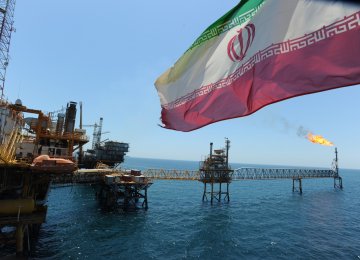Iran’s sovereign wealth fund is becoming wealthier due to the oil producer’s increased sales, though low oil prices are slowing its growth.
The National Development Fund of Iran currently has $68 billion in overseas assets, according to the chairman of its governing board.
The fund, which collects oil price windfalls for infrastructure investment, is yet dwarfed by sovereign wealth funds of its neighbors in the Persian Gulf periphery. The UAE has nearly $800 billion and Saudi Arabia has $600 billion in assets.
“The fund’s overseas assets have remained unchanged since I took responsibility for the national development fund,” Mehr News Agency reported Ahmad Doust-Hosseini as saying.
Doust-Hosseini took over the fund’s management in July when its former director, Safdar Hosseini, along with all other governing board members of the fund resigned over a salary scandal.
Salary Scandal
Whistleblowers circulated images of paychecks of government executives of state-owned banks and insurers, along with NDFI’s executive board. The public were outraged at what was dubbed “unconventional salaries and loans” by Economy Minister Ali Tayyebnia.
Seyyed Safdar Hosseini, who was handpicked by President Hassan Rouhani to head the fund, was taking out 580 million rials ($17,000) per month, state-run Tehran Times reported. Not much by international standards for a sovereign wealth fund executive, but hefty for an average employee who earns less than $500 a month.
The salaries were deemed unconventional, as most government organizations are banned from paying over seven times the average wage to their executives. However, the executives of these organizations used legal loopholes to circumvent the pay caps. Most also took out large low interest loans.
News of NDFI board’s resignation came just two days after Tayyebnia sacked the directors of four banks for receiving unconventional salaries and loans.
On June 12, Rouhani wrote a letter tasking First Vice President Es’haq Jahangiri to pursue the issue of extremely high salaries of some executives and sack those who had violated the law.
A Shared Reputation for Opacity
The fund, as with all other government agencies, is opaque. The last published report of its investments is two years old. It covers the fiscal March 2014-15 when sanctions were still in place.
According to Mehr News Agency, at that time, the NDFI had lent $23.2 billion to banks and credit institutions, so they would invest in Iran’s infrastructure on the fund’s behalf.
This opacity is not uncommon. The central bank publishes key economic data with a three-month lag. Some of the latest reports from the bank are one or two years old. The bank actually stopped publishing any economic data during the 2012-13 financial crisis.
Doust-Hosseini may start a new precedent for transparency, though this is not to be expected.
Fewer Petrodollars
Growth in the fund’s assets will be slow in the coming years. It receives 20% of Iran’s oil revenues each year. With oil prices less than $50 a barrel, growth will be minimal, compared with the dream years of late 2000s and early 2010s, when oil sold for over $100 barrel, says Doust-Hosseini.
“In the best-case scenario, if we have $50 billion in oil revenues, the NDFI will receive $10 billion,” the executive told state-owned Shana.
The Oil Ministry is raising output to increase government revenues. The government’s oil revenues missed budget targets by 25.7% during the first quarter, the latest central bank data show.
“Iran’s August crude oil exports jumped 15% from July to more than 2 million barrels per day, according to a source with knowledge of its tanker loading schedule, closing in on Tehran’s pre-sanctions shipment levels of five years ago,” Reuters reported.
“The No. 3 OPEC producer has more than doubled its crude exports, excluding the ultra light oil condensate, since December.”
Government expenses have climbed in recent years, forcing the Rouhani administration to cancel most investment projects. Despite the cancelation of investment projects and increasing, though less than wished for, oil sales, the central bank reported a $6.2 billion operational deficit from the first quarter.






Add new comment
Read our comment policy before posting your viewpoints